Comments from the Chair
The Alamo Sierra Club played a major role in local City of San Antonio (COSA) elections this year, thanks to the strong leadership of Darby Riley, and the hard volunteer work of many. Several of our endorsed candidates are now serving in San Antonio government: Mayor Ron Nirenberg, District 4 Councilman Rey Saldana (incumbent), District 5 Councilwoman Shirley Gonzales (incumbent), District 7 Councilwoman Ana Sandoval (defeating incumbent Chris Medina), and District 9 Councilman John Courage (open seat). We did not endorse in Districts 1, 2 and 8, and lost in Districts 6 and 10. We have high expectations for a more transparent government, more responsive to the entire community, not just wealthy developers.
Here are some of what I believe are our top priorities for the coming City Council in fiscal year 2018. PLEASE, e-mail me with your own thoughts on what is most important for us to prioritize with this new local government!
Climate action
We need a strong Climate Action Plan (CAP) to lead us to 100% renewable energy as soon as practical. Adequate funding, in the range of $300,000, should be provided to the Office of Sustainability to engage in broad community outreach to develop a CAP with clear goals, pathways, and measures for success. Social and environmental justice are key components to include. Climate Action is an essential part of our Sustainability Plan in SA Tomorrow.
Air quality improvement
We now are recording ozone levels even higher than Houston and Dallas. The Governor has just cut almost $1.5 Million from air quality efforts by the Alamo Area Council of Governments (AACOG).
It is absolutely vital that COSA work with others in AACOG to find ways to maintain its air monitors, and robust photochemical monitoring and other scientific work. That is only a first step. San Antonio, regardless of federal and state (in)action must move forward aggressively to improve our air. This is a matter of urgent public health. We have the worst childhood asthma rates in Texas.
Clean healthy air is a basic component of Sustainability. Climate Action will be critical to improving our air, and increased energy conservation and expansion of renewable sources of energy, with removal of fossil fuel and nuclear fuel sources as soon as practical, will be critical positive steps in Climate Action and improved Air Quality. Uniform Building Code (UBC) changes to require solar ready new construction are needed now.
Changes in our city’s water management
- We need a full review of the details of the Vista Ridge Project, with independent financial review, report to new Council and Mayor within 30 days, and full public disclosure of findings
- COSA should review the SAWS mission as it celebrates its 25th year anniversary. We believe SAWS has lost its original focus of providing adequate, safe and cost effective water for its citizens. It now describes its role as “making San Antonio Waterful”, and acting as a promoter of city growth, including attracting water intensive industry to our semi-arid, water limited region. This is very wrong and will paint us into a corner in the future in the same manner as California.
- Water conservation must be re-emphasized, including year round Stage 1 watering restrictions. UBC changes should greatly alter use of automatic sprinkler systems. Recycled “grey” water should be much expanded. Stormwater management with rainwater capture and slow,-sink-and-spread practices should be integral parts of our water management planning. UBC changes to require rain water harvesting (RWH) readiness for new construction should be instituted. SAWS should look at neighborhood RWH also, similar to neighborhood solar.
- The structure of the SAWS Board should be reviewed. We are concerned they are too close to Developer and Chambers of Commerce interests in promoting San Antonio growth and sprawl. The previous Council abrogated its responsibility to provide oversight of SAWS, and especially of the ever changing terms of the Vista Ridge contract. The new Mayor and Council must reassert that SAWS is accountable to COSA and to all the citizens and ratepayers of San Antonio. Current citizens should not subsidize future sprawl.
- COSA should encourage and require more cooperation between SAWS and CPS Energy to achieve increased efficiencies of both organizations. Since they are each other’s largest customer, we believe there are areas for cooperation that could greatly reduce waste and lower overall costs for both organizations, thereby minimizing ratepayer bills.
- COSA should review stormwater and impervious cover policies to create more sustainable development. Channelizing runoff from new developments leads to flooding problems downstream. Citizens then demand that COSA fix the problem at great taxpayer expense with yet more channelization. It’s a self-perpetuating problem that needs to be addressed on-site by developers and not simply shuttled downstream.
Major changes in transportation and urban planning
San Antonio should focus on “Smart Growth”. We recognize that our City is expected to grow significantly. We do NOT accept the inevitability of endless sprawl and associated traffic congestion, pollution, and loss of wildlife habitat.
- We support transportation planning, as outlined in the Transportation Plan component of SA Tomorrow. Much more transit of many forms is needed, which could include rail. Much more needs to be done to reduce 1 passenger private vehicle use. Much more needs to be done to enable more SAFE travel by bicycle and pedestrian traffic. Building more highways is NOT a solution to our traffic congestion.
- Low-impact development (LID) needs much more support, as was included in the original SA Tomorrow planning language before last minute major weakening by the Real Estate interests on the Planning Commission, with the support of then Mayor Taylor. Low impact development will help transportation, water management, land use, air quality and habitat. These changes will also reduce congestion, improve health, increase exercise opportunities and improve quality of life.
- Our trees play a valuable role in controlling stormwater runoff, reducing air pollution, reducing urban heat island effects, and beautifying our community. Our ability to manage our local affairs is under severe threat by the Governor, most especially in his attack on our tree ordinance. We need to protect our local government’s ability to manage our air, water, and urban landscape for the benefit of all.
- Infill development should be encouraged to rehabilitate many underused and abandoned parts of central San Antonio. Creative ways to address gentrification must be found, and could include a COSA housing authority, lend lease programs, and other ways to enable current residents to stay in their homes as property around them increases in value. Social and environmental justice for disadvantaged populations that historically have borne the brunt of environmental degradation must be a priority in our community, where most of the growth in city wealth has bypassed many parts of our economically very segregated city.
- Loss of wildlife habitat, green space, and development over our Edwards Aquifer are major threats to our quality of life.
- The Edwards Aquifer (EA) remains our most important and by far our cheapest source of drinking water. We should do much more to preserve much larger areas of the EA Recharge and Contributing Zones (EARZ and EACZ) from development. There are ever increasing risks of sewage, pesticides, petroleum products and other materials contaminating the EA. We have never needed a treatment plant to clean EA water, but once contaminated, it will be forever contaminated. A billion dollar treatment plant would be needed and our water bills will escalate substantially.
- The Endangered Species Act has played a crucial role in protecting our EA but is under attack not only in Congress, but right here in Texas. Specifically, our State Government seeks to delist the Golden Cheeked Warbler, which has critical habitat in the EA region. San Antonio must redouble our efforts to protect these birds through the Edwards Aquifer and Southern Edwards Habitat Conservation Plan.
The Plan is a first step but still allows far too much loss of habitat in Bexar County. Protection of EA habitat has multiple community benefits, adding important recreational outdoor green space to our growing urban region, protecting wildlife such as the warbler and other native species, protecting EA water, protecting trees and their contributions to our air quality and heat mitigation.
Improved transparency and ethics in CoSA
- We need much more public access to information about business development subsidies (SA has a zero rating!)
- Ethics board overhaul. The Ethics Review Board should have some independence and authority. Council should not be able to simply vote to excuse themselves from violations.
- Public Private Partnerships (P3 Projects) are much touted of late, especially by SAWS’ Mr. Puente. We believe these often result in public financing going to private company profit, with almost total loss of transparency and public scrutiny in the process, because of private investor privacy rights. An example might be the still unclear accounting of what happened to the $100 Million of “missing” pipeline with Abengoa as part of the Vista Ridge Project.
Another example is the Central Texas Regional Water Supply Corp (CTRWSC), a P3 set up to enable Vista Ridge to use condemnation proceedings and public financing. We have attended several of their carefully scripted Board of Directors meetings. These meetings are not announced on their website, and only obscurely announced publicly in Austin, although they take place in SA. Discussions are entirely in executive session with only votes (unanimous) taken in public, and no minutes are released publicly. This is a terrible abuse of public trust.
Improved recycling programs
Data on program results and costs are needed to find areas for improvement. Does the plastic bag program withstand analysis, or should they be banned? San Antonio should aggressively increase efforts to achieve zero net waste as part of SA Tomorrow Sustainability.
by Terry Burns, M.D., Alamo Group Chair
Summer Poetry Party & Potluck Dinner
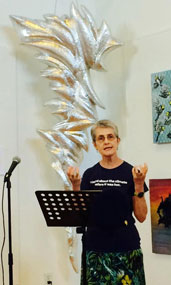
Come join us at our annual summer party and potluck dinner. Get ready to relax, enjoy good company, and be inspired by poets addressing climate change and environmental concerns through their work. Bring an interesting covered dish to share. Beverages will be provided. Remember to bring your plate and utensils, too.
Tuesday, July 18th
6:30 p.m.
William R. Sinkin Eco Centro, 1802 North Main Avenue
Map
Poets from the local environmental writer's group Stone in the Stream will be joined by Texas poet laureates Carmen Tafolla and Carol Reposa. Other poets include: Janice Campbell, Marisol Cortez, Jim LaVilla-Havelin, Kamala Platt, Darby Riley, and Mobi Warren. You may find yourself inspired to write your own poem.
Resist Greg Abbott's War on Trees
June 26, 2017
Governor Greg Abbott wants to repeal every tree preservation ordinance in the state, including our San Antonio ordinance. He has called a Special Session of the Legislature and made it one of his top priorities. The environmental consequences for San Antonio and Texas would be dramatic, that's why it is so important for you to resist Abbott's War on Trees.
First, send a message to Speaker of the House Joe Straus and let him know you oppose this legislation. We don't have the votes in the Senate to defeat it and are depending on the House to stop it. It's especially important for people in Straus's district (pdf) to contact him. His contact info is:
The Honorable Joe Straus
Speaker of the House
7373 Broadway Suite 202-A
San Antonio, TX 78209
Second, be sure to send a message to your State Senator and Representative at DefendTexasTrees. Simply fill in the petition and click send.
The War on Trees is an assault on your pocketbook
Governor Abbott recently called for legislation to prohibit tree ordinances in the Special Session beginning July 18th. He claims such ordinances are “socialistic” and “an assault on private property rights”. If he is successful, developers will be free to clearcut every tree, even giant heritage oaks, from their project sites.
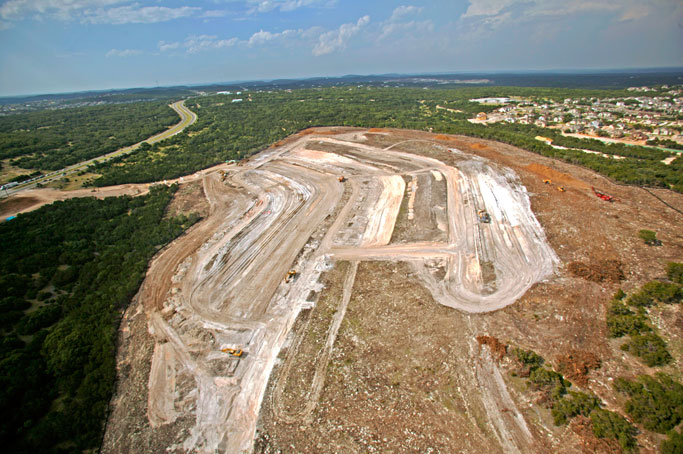
The first thing you need to know is that this so-called “assault on private property rights" is imaginary. You are likely free, at this moment, to grab your chainsaw and destroy every tree on your property. San Antonio’s tree ordinance, like almost every other ordinance in Texas, applies only to developers, not to homeowners. In addition, tree ordinances do not apply to agricultural operations like farms or ranches, in rural areas, in unincorporated areas of the county or in the 1100+ cities that don’t have one.
The second thing to know is that the proposed legislation is actually the worst kind of “socialism” because it takes from the poor and gives to wealthy corporations. Its effect will be to shift the costs of new development onto you, the taxpayer.
Effects of land development on the community
When land is developed, the new subdivisions, big box developments and strip malls begin discharging stormwater, water contaminants and air pollutants onto other people’s property. Cars spew tons of exhaust containing toxic gases and even carcinogens like benzene. Unshaded parking lots become prolific points of ozone generation.
Stormwater runoff floods into creeks and rivers. Pesticides, herbicides, dog droppings, motor oil and other contaminants are washed off and can find their way into the Edwards Aquifer.
Taxpayers are left to pay for cleaning up the mess
As the San Antonio Express-News has reported:
...floods keep happening, damaging private property and roads, and taxpayers end up with the bill. Since 2007, San Antonio and Bexar County combined have spent at least $850 million on drainage. That’s only a small fraction of the $2 billion worth of flood control projects needed in the city alone.
(With a Building Boom Comes Higher Flood Risk, November 27, 2016)
...not meeting federal ozone standards could cost San Antonio and the surrounding area over $1 billion in lost economic output per year.
(Study: Ozone violations costly, February 23, 2017)
Of the 13 stretches of creeks and rivers in Bexar County that the U.S. Environmental Protection Agency has formally rated for human use, all of them have E. coli bacteria levels too high for swimming. The source … is human, pet and wildlife feces that collect on asphalt and concrete and wash into waterways.
(With a Building Boom Comes Higher Flood Risk, November 27, 2016)
Tree ordinance ensures developments clean up after themselves
So, what does the tree ordinance have to do with this? The City enforces its tree ordinance to ensure that new developments provide a minimum level of tree canopy to manage stormwater runoff and clean up the air pollution and water contamination the completed development will generate. In a densely populated urban environment, trees are essential for maintaining people’s health.
Trees absorb pollutants and remove ozone from our air. They provide $1.7 billion in stormwater management and their root systems absorb contaminants, removing them from surface water (see Urban Ecosystem Analysis | San Antonio, Texas - May, 2009).
In reality, tree ordinances are no more an "assault on private property rights" than regulations requiring developers to construct sanitary sewer systems or public streets.
One final point: San Antonio taxpayers have already been most generous to developers and homebuilding corporations. We are spending $3.4 billion of our own money to build the Vista Ridge pipeline to supply water for new developments. And we’ve spent 325 million tax dollars buying forested land over the Edwards Aquifer Recharge Zone to protect our drinking water from development.
So if you don’t want your tax dollars to subsidize out-of-state corporations and wealthy developers, tell your state legislator in no uncertain terms that you oppose the legislature’s War on Trees.
by Richard Alles, Forests/Trees contact
Before the Flood
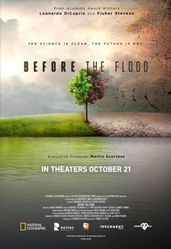
This month, our Lions Field event is a screening of the climate change documentary Before the Flood.
Thursday, July 27th
6:30 p.m.
Lions Field Adult Center, 2809 Broadway @ Mulberry
Use VIA bus route 9 or 10
Map
This 2016 film captures images of changes already occurring in the world from every corner of the globe. Shot over a three-year period, it creates a sense of urgency and an awareness of what needs to be done to prevent the demise of endangered species of ecosystems, and of native communities, around the planet. This event is free and open to the public.
Canyonlands National Park, Island in the Sky District
Some of the most spectacular scenery in the southwestern US is in southeastern Utah. Island in the Sky is one of three districts in Canyonlands, further to an article in the May issue of this newsletter, which was mostly about the Needles District. Island in the Sky is the most visited district of the park, not far to the southwest of Arches National Park and the city of Moab. There are many amazing viewpoints accessible on paved roads. Here's the park website and the overall map.
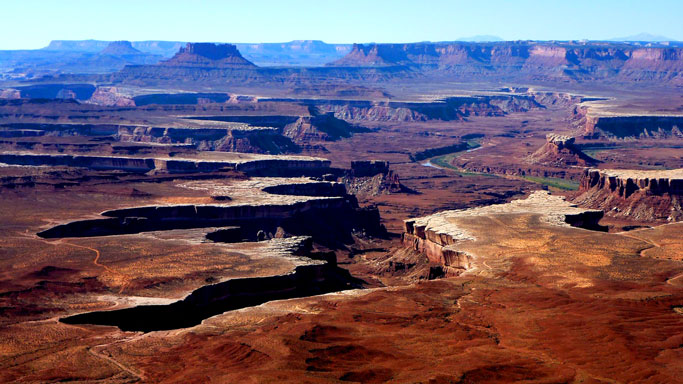
Visible across the bottom of the image above, from near the paved roads, and also the second image, is the White Rim Road. This is a 100 mi 4WD route without water and requires permits. I looked at this thirty years ago and thought, well that's an ATB century, ok done that, why not this? Oh but that was on paved roads. This is substantially more serious.
There are a number of hiking trails. I thought I had done the interesting ones in Island in the Sky, but as usual looking again I see there are more to do. Here is the park's hikes web page; Island in the Sky trails are at the top.
What are all these distinctive colorful layers?
White Rim is the name of the hard stratum that tops the the plateau dominating these pictures. Here's the park geology web page; at the bottom note the link Rock Strata. That goes to a chart explaining the layer cake of the Colorado Plateau; White Rim is a sandstone of Jurassic age, 245 million years old. Each stratum in the chart is a further link to a page with details and an example photo.
With these resources those of us seriously determined could identify many of the strata visible in these pictures. Here's a very good National Park Service web page explaining what we are looking at when visiting twenty of the NPS units on the Colorado Plateau. Then when visiting Arches or wherever we could think for example, oh that's Entrada sandstone, which provides the feeling we actually understand something.
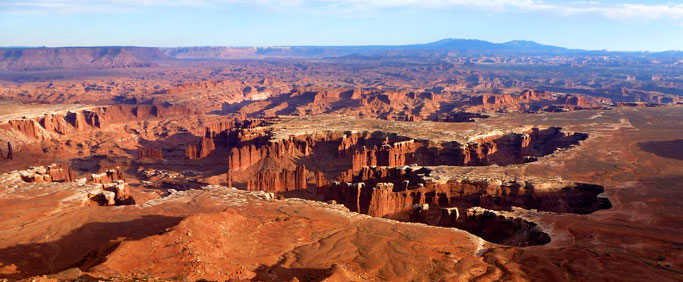
Camping
A bunch of detail was included in the May article mentioned above. Of key importance is to mention again, that the small campground at Island in the Sky does not have reservations or water. But there are camping options along Hwy 313 on the way into the park from north of Moab. As always, best to arrange camping early and then go for a scenic drive.
Nearby areas
In addition to Arches National Park to the northeast, just to the south is Bears Ears National Monument, which was the subject of an article in the March issue. In the middle of Bears Ears lies Natural Bridges National Monument. Due west is Capitol Reef National Park; see the August 2016 issue. And only 200 miles to the southwest is the central area of Grand Canyon National Park. There were some pictures from Grand Canyon in the April and June 2016 issues.
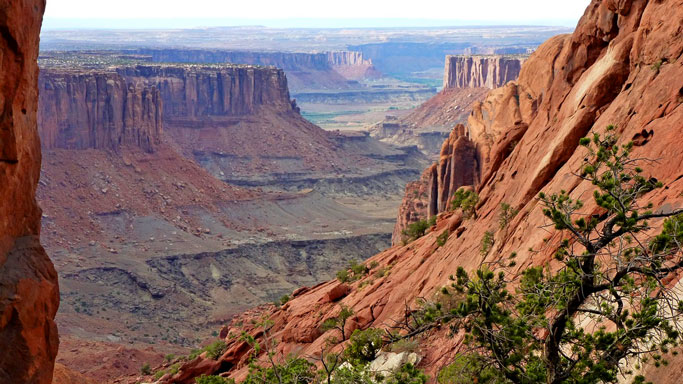
by Kevin Hartley, Alamo Group Outings leader

Outings: The Call of the Wild
Visit the Alamo Sierra Club Outings page on Meetup for detailed information about all of our upcoming Sierra Club Outings.
The Alamo Sierran Newsletter
Richard Alles, Editor
Published by The Alamo Group of the Sierra Club, P.O. Box 6443, San Antonio, TX 78209, AlamoSierraClub.org.
The Alamo Group is one of 13 regional groups within the Lone Star Chapter of the Sierra Club.
Keep your email address current!
Send updates to Loyd Cortez, providing your name, address and membership number (if known).
Changed your mailing address?
Have you moved? Let us know by sending your old address, your new address and your member number (look on the upper left corner of your mailing label) to: address.changes@sierraclub.org.
Go online for the latest news and events
 |